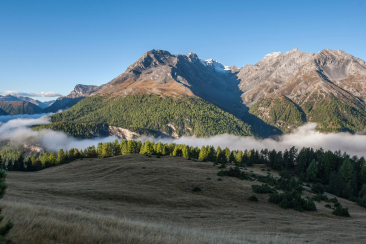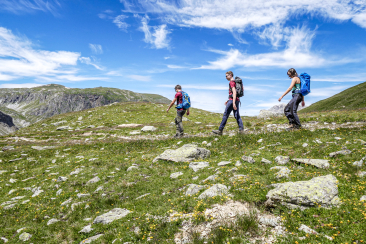Dream job park ranger
With Reto Strimer in the Swiss National Park

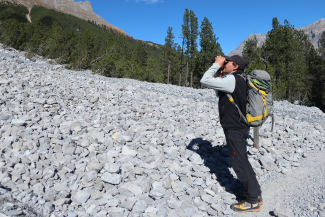
Day wake in Val Mingèr
The day starts early. Even before sunrise, we start in Scuol with Reto Strimer from Ardez into a ten-hour working day in his dream job. His workplace today is the popular Val Mingèr in the Lower Engadine. Wearing weatherproof clothing, sturdy mountain boots and carrying a heavy backpack, we meet him at the entrance to the wildlife-rich side valley of the famous Val S-charl near Scuol. Yellow posts mark the valley border in the landscape. We walk past them and enter the strictly protected nature of Switzerland's only national park.
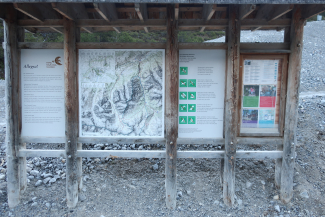
Protection, Research & Information
The park, founded in 1914, primarily protects, researches and informs. The question is always how nature develops when it is completely removed from human influence. Strict rules and high fines serve to protect the park, while a 15-member research commission fulfills the second task. Information is ultimately provided by the large visitor center in Zernez, a smaller exhibition in S-charl and the marked hiking trails: 21 different routes lead through the park. In total, there are 80 kilometers of hiking trails that bring visitors closer to the fascinating nature - or vice versa. A park ranger like Reto Strimer does work in all three of the park's areas of responsibility: protection, research and information.
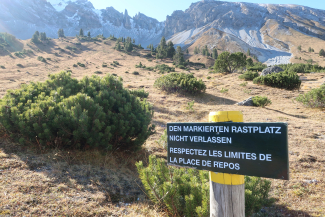
Seven rules
Anyone who enters the Swiss National Park, as we did, must follow seven different rules. For example, you are not allowed to leave the marked hiking trails, not to leave any waste lying around, but also not to take anything out of the park. In addition – Reto Strimer explains to us – there is a ban on dogs, mountain bikes, a fire ban, a winter closure, a bathing ban as well as a ban on spending the night in the park. These rules can be found on all communication media of the national park and are posted on signs along the hiking trails.
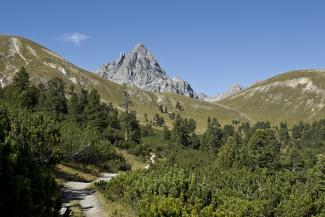
Minimal intervention
The strict requirements serve the ultimate goal of preserving nature from human influence. And they are enforced: If someone does not abide by these rules, the park rangers are allowed to issue a fine under the authority of the federal government – including Reto Strimer. Mostly, however, it is the park rangers themselves who interfere with nature. They clear impassable paths, in exceptional cases shoot sick game or game shot during the high hunt, or leave the path for research, control and monitoring purposes.
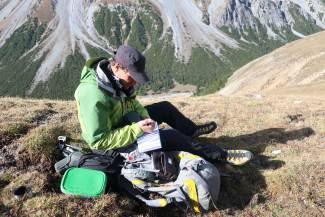
Sharp senses
Even before the sun rises above the mountain peaks in the east, Reto Strimer suddenly listens. «Did you hear that? That was a crested titmouse.» Astonished, we look at each other – we hardly noticed the chirping, while he already notes the identified bird species and the time in his diary. This note will be followed by many more until the evening. The park ranger has to keep a close eye on the animal population and meticulously document every animal he notices. It is therefore good and important that Reto Strimer is also a trained field ornithologist and thus recognizes birds almost casually, without being distracted by other tasks.
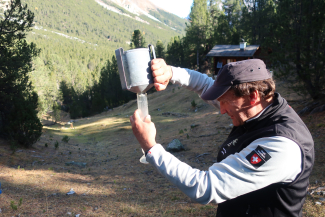
How to become a park ranger
Today, seven people practice the profession of park rangers in the Swiss National Park. Each of them has completed an apprenticeship. In addition, each park ranger has also successfully completed the hunting exam as well as the training as a game warden. Enjoyment of nature is another prerequisite, as is good stamina, because in summer park rangers like to be out and about from sunrise to sunset – on foot, mind you, and in rough terrain. The backpack with binoculars, telescope, a pharmacy, all kinds of documents and note material, a laptop and the snacks we could probably not carry so long as untrained.
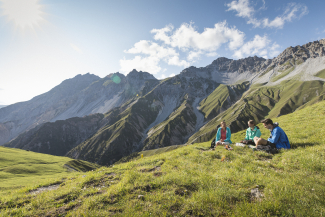
Fascination National Park
Again and again the backpack comes into use. When we look for game at the rest area, we ask Mr. Strimer about his favorite animal: without hesitation, the park ranger names the chamois and adds that this is the only game species that never became extinct and had to be reintroduced. Then he continues «there I have to tell you about the aunt.» He once observed how a female chamois took in a foreign fawn after the little one's mother died during the winter. When the experts later marked the animals, they found out during the subsequent blood analysis that both mothers were sisters and the orphaned fawn thus ended up with its aunt.
It is probably such touching experiences and encounters that make his job a dream job despite buses, tired legs, early rising and occasional rain.
